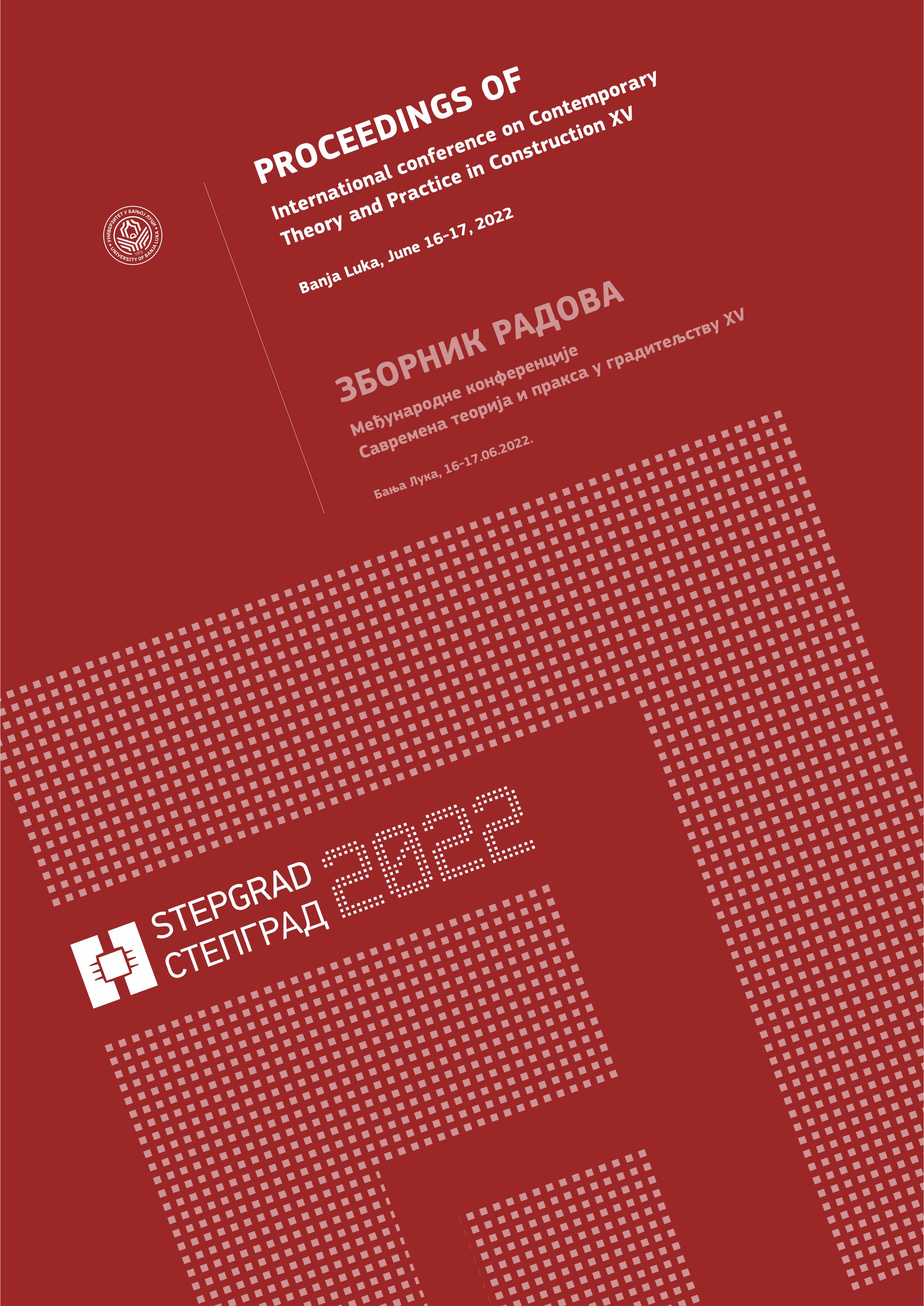APLICATION OF THE PRINCIPLES OF INTEGRATED PLANNING IN THE URBAN PLAN OF BANJALUKA 2020–2040 WITH A FOCUS ON THE SUSTAINABLE USE OF NATURAL RESOURCES
DOI:
https://doi.org/10.7251/STP2215435MAbstract
The application of the principle of integrated planning is the basis of modern planning aimed at sustainable and resilient built environments. It refers to an adequate methodological framework and procedural steps of planning, as well as to the satisfactory general social conditions in which spatial planning takes place, which, especially in transition societies, is still difficult to achieve. Some improvements in this area are, however, possible in practice at the local level. This paper is focused on the sustainable use of natural resources in the urban area of the city, by applying the principles of integrated planning to the example of the Urban Plan of Banja Luka 2020–2040.
References
B. Milojevic, Cities in Changes-Urban Forms, Transformations and Influences. Banjaluka: Faculty of Architecture, Civil Engineering and Geodesy, University of Banjaluka, 2015, pp. 31–73
N. Dragovic et al. (Eds.). Upravljanje prirodnim resursima u Jugoistočnoj Evropi: šume, zemljište i vode. Skopje: GIZ, 2017, pp. 11–42
B. Milojevic, “Integrated planning as a mechanism for creating sustainable and resilient settlements”, in Integrated Urban Planning-Directions, Resources and Territories. E. Anguillari, B. Dimitrijevic, Eds. Delft: TU Delft, 2018. pp.37–63
H. Gerlings, D. Stead (2003). “The integration of land use planning, transport and environment in European policy and research”. Transport policy. [On-line]. 10, pp. 187–196. Available: https://www.academia.edu/22177003/The_integration_of_land_use_planning_transport_and_environment_in_European_policy_and_research [March 1, 2022]
ABED. Abukhater (2009, May). “Rethinking planning theory and practice: a glimmer of light for prospects of integrated planning to combat complex urban realities”, Theoretical and Empirical Researches in Urban Management [On-line]. 2 (11). pp. 64–79. Available: http://www.um.ase.ro [March 3, 2022]
D. Lawrence. “Planning theories and environmental impact assessment”, Environmental Impact Assessment Review, 20(1), pp. 607–625, Dec. 2000.
S. Picket, M. Cadenasso, J.Grove. (2004). “Resilient Cities: Meaning, models, and metaphor for integrating the ecological, socio-economic, and planning realms”, Landscape Urban Planning. [On-line]. 69(4), pp.369–384. Available: https://www.fs.fed.us/nrs/pubs/jrnl/2004/ne_2004_pickett_001.pdf [March 1, 2022]
J. Wu. “Landscape ecology, cross-disciplinarily, and sustainability science”, Landscape Ecology 21: 1–4, 2006.
S. Ray. “Rapid urban change demands a theory, tools and a ‘fast forward’ planning – an assay”, in Fast Forward: City Planning in a Hyper Dynamic Age, ISOCARP Review 08. Eds. S. Nan, C. Grossop. Perm: ISOCARP, 2012, pp. 14–26. Available: https://isocarp.org/product/2012-48th-isocarp-congress-permrus [March 3, 2022]
N. Rottle, K. Yocom. Ecological design. Lausanne: AVA Publishing, 2020.
D. Counsell et all. “Integrated Spatial Planning: Is it living up to expectations?” Town and Country Planning, [On-line]. 75(9), 243–246. Available: www. Integratedspatial_planning_is_it_living.pdf [March 3, 2022]
N. Kosareva, A. Puzanov. “Urban development and urban planning policy in modern Russia”, in Fast Forward: City Planning in a Hyper Dynamic Age, ISOCARP Review 08. S. Nan, C. Grossop. Eds. Perm: ISOCARP, 2012, pp. 262–272. Available: https://isocarp.org/product/2012-48th-isocarp-congress-permrus [March 3, 2022]
S. Teriman. “Measuring neighborhood sustainability: a comparative analysis of residential types in Malaysia”, PhD thesis, Queensland University of Technology, Brisbane, 2012. Available. https://eprints.qut.edu.au/54679/1/Suharto_Teriman_Thesis.pdf. [March 3, 2022]
J. Ahern. “From fail-safe to safe-to-fail: Sustainability and resilience in the new urban world”, Landscape and Urban Planning. 100 (2011), 341–343, March 2011.
T. Yigitcanlar, S. Teriman. “Rethinking sustainable urban development: Towards an integrated planning and development process”, International Journal of Environmental Science and Technology, 12(1), pp. 341–352, Jan. 2014.
B.J. Skinner. Earth Resources. New Jersey: Prentice Hall, 1989.
The Law for Spatial Planning and Construction in The Republic of Srpska. (2013). [On-line]. NN. 40/13. Available: https://www.vladars.net/sr-Cyrl/Vlada/Ministarstva/mgr/Documents/.pdf [March 3, 2022]
The Rulebook on the manner of preparation, content and formation of spatial planning documents in The Republic of Srpska (2013). [On-line]. NN. 69/13. Available: https://www.vladars.net/sr-Cyrl/Vlada/Ministarstva/mgr/Documents/.pdf [March 3, 2022]
A. Mitric-Radulovic. “Ecological index in urban planning”. Internet: https://www.gradnja.rs/ekoloski-indeks-u-urbanistickom-planiranju-sta-je-to-zapravo-i-cemu-uopste-sluzi/[March 3, 2022]
C.S. Holling. Adaptive Environmental Assessment and Management. Chichester: J. Wiley &Sons, 1978.
B. Milojevic, I. Kuvac. “Integrated urban planning of Banjaluka: possibilities and challenges of new urban plan”, Book of Proceedings International scientific conference on contemporary theory and practice in construction XIII [Digital publication], 2018, pp. 352–368.
The Law on Public Procurement in B&H (2014). [On-line]. NN. 39/14. Available: https://advokat-prnjavorac.com/zakoni/Zakon_o_javnim_nabavkama_BiH.pdf [March 3, 2022]

